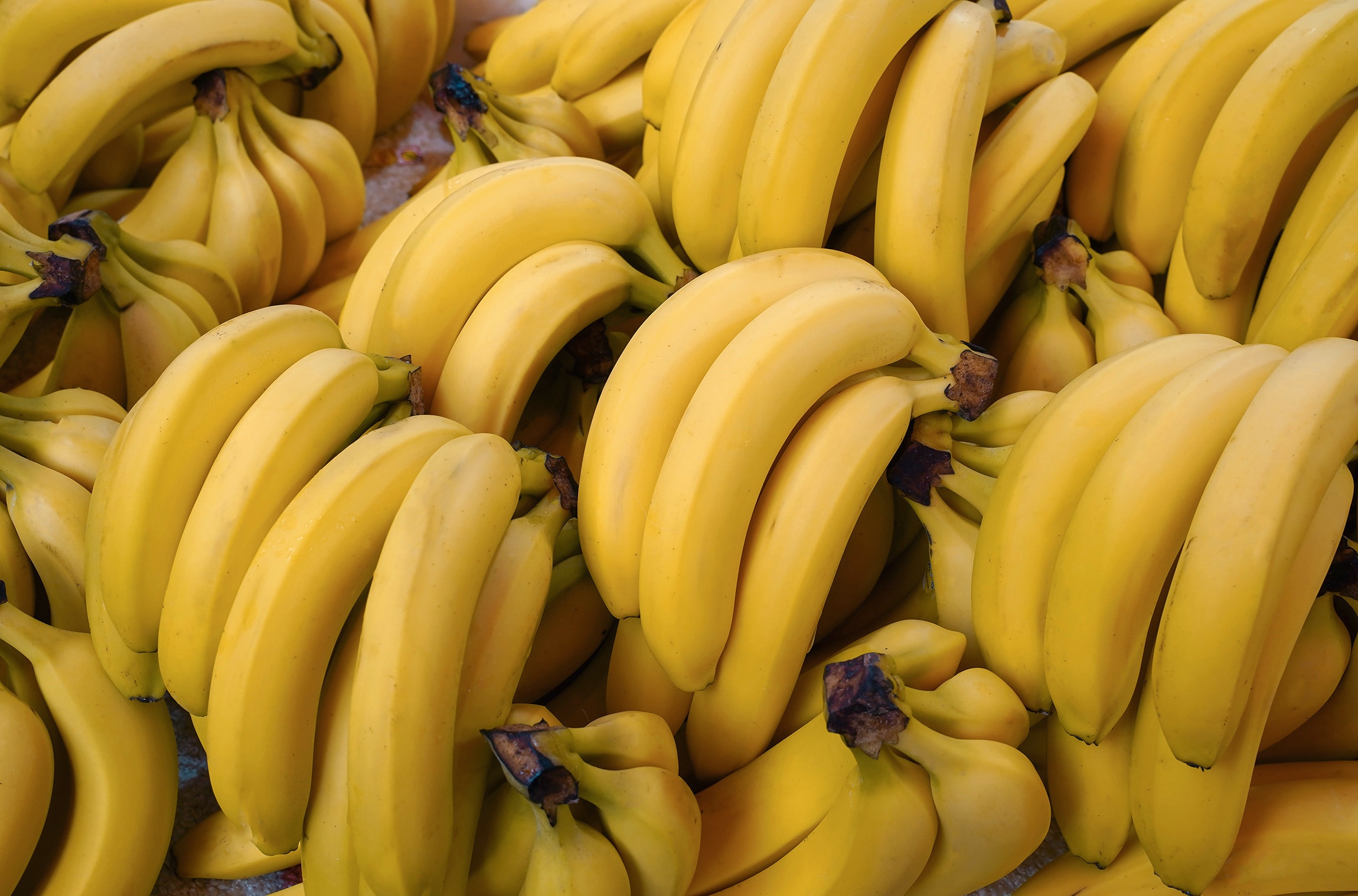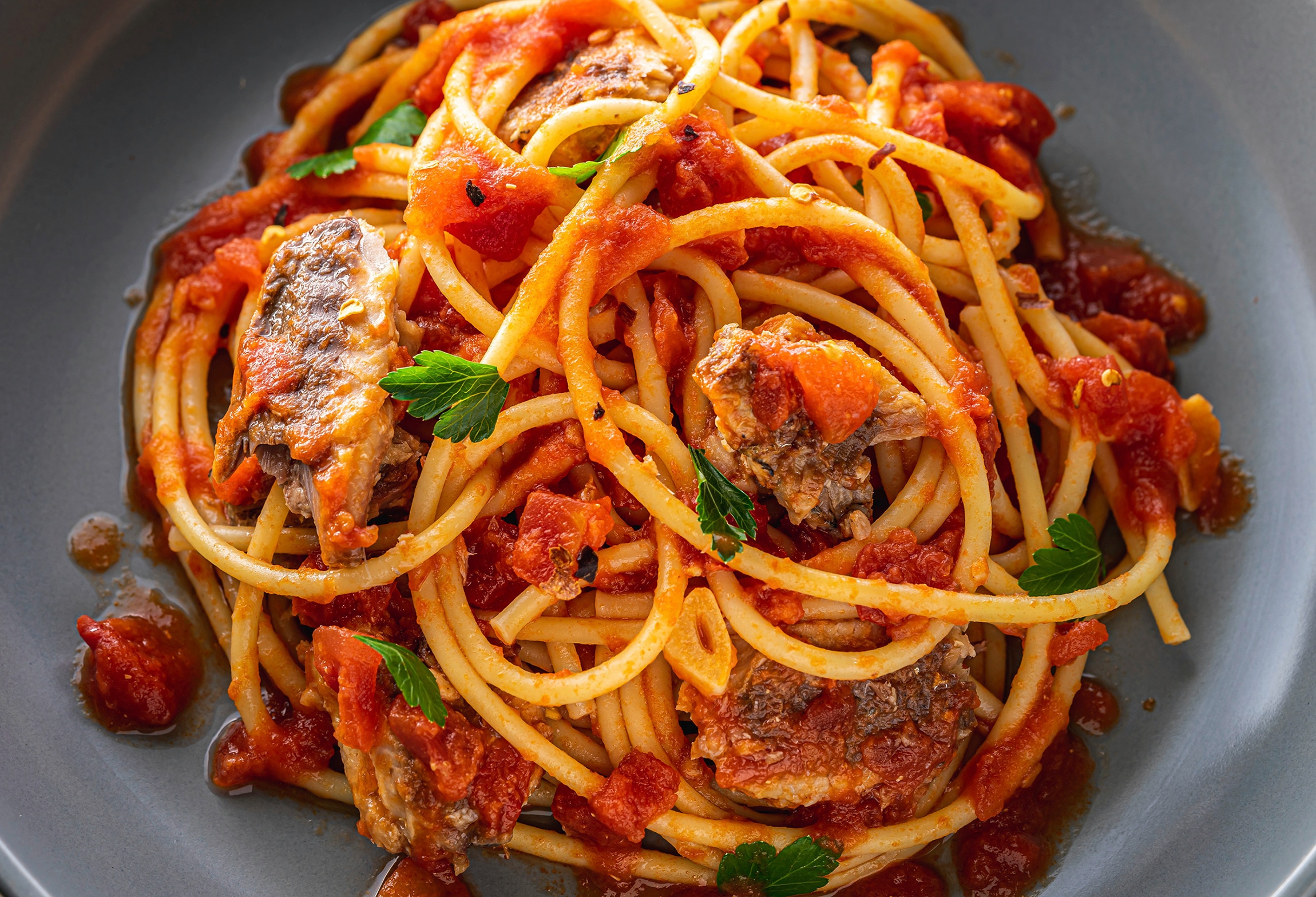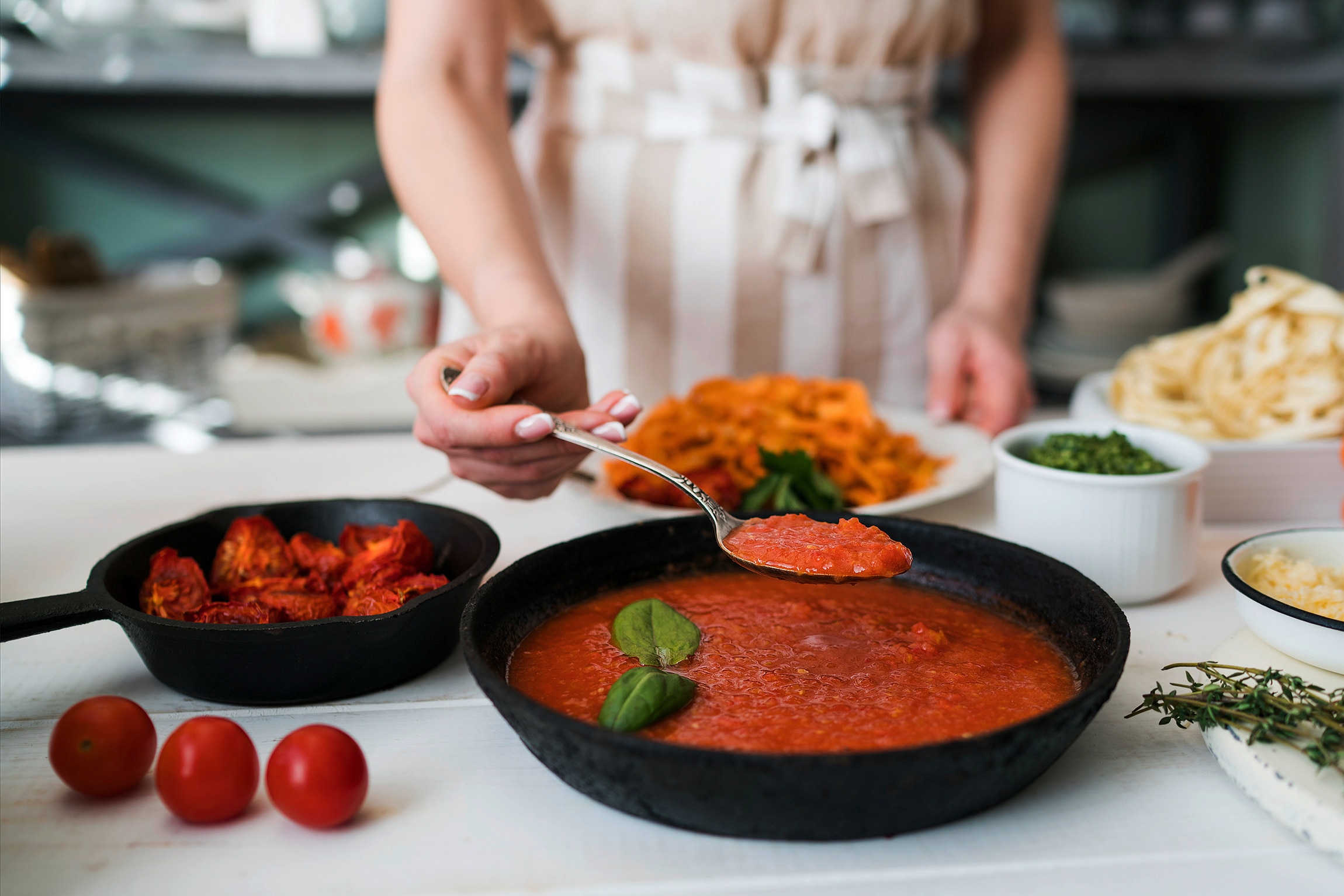Skip to:
Banana ketchup is one of the defining innovations of Filipino cuisine. It's distinctly sweeter, a quality that Pinoys love. If you grew up on the stuff, it must still hold a special place in your heart. It conjures up nostalgic images of birthday spaghetti, tortang talong for breakfast, and fries dipped in mom's homemade Thousand Island dressing.
On top of that, it's also a lifesaver for many home cooks on a tight budget. After all, this condiment started as an alternative to the pricier tomato ketchup. You can use it to make a small packet of tomato sauce more substantial and last longer or to replace it altogether. Got a bottle in your pantry? Try using it in any of the classic pasta sauces below for an unexpected – but familiar-tasting – twist.
A Brief Origin Story With Nutrition Facts: Banana Ketchup

But first, here’s a quick history lesson. Do you know how this Pinoy condiment came to be? You have Filipina food chemist and war heroine Maria Orosa to thank. Contrary to popular belief, she actually invented it sometime before (not during!) World War II. As the story goes, she made it her life's mission to study native food and use her knowledge to help build a self-sustaining Philippines.
She believed in the versatility of local ingredients that were widely accessible to the average Filipino. So, she made wine out of fruits like tamarind and santol, flour out of cassava root, and ketchup out of bananas. She was an innovator who used her talents to support her home country during a time of need.
Back then, tomatoes had to be imported, inspiring Orosa to make ketchup without them. The banana ketchup ingredients in her original recipe included mashed bananas, vinegar, and spices. The mixture was dyed red to appear more appetizing. Eventually, this concoction was mass-produced and made available in grocery stores everywhere. It continues to prove its usefulness: banana ketchup remains a staple of Filipino households today.
If you want to maximize the nutritional benefits of the sauce, try making homemade banana ketchup. There are lots of recipes online by fellow home cooks to inspire you. Store-bought bottles are reliable, but nothing beats going all-natural. You can enjoy the energizing carbs from the bananas without added preservatives. Plus, you can tweak the flavors to suit your tastes, making it as sweet, spicy, or savory as you like.
Simple Pasta Sauces to Make With Banana Ketchup
Change how you make your favorite pasta sauces by giving them some sweetness and a bit of spice.
1. Filipino-style spaghetti

This dish put banana ketchup recipes on the map. Filipino-style spaghetti is known for its sweet-savory sauce, red hot dogs, and processed cheese as a topping. Non-Pinoys find this combination strange, but locals wouldn't have it any other way. If you’re using ready-made sweet spaghetti sauce for this, adjust the flavors with extra ketchup, brown sugar, and salt.
2. Ragù
In Italian cuisine, a ragù is any simmered meat sauce cooked on low for a long time. You'll find it in dishes like lasagna and spaghetti Bolognese. Many people think of ragù as a tomato-based sauce, but several traditional recipes are surprisingly tomato-less.
You can make a ragù with chopped or ground meat, sautéed vegetables, and Knorr Beef Cubes dissolved in liquid. Add ketchup if you like, but keep it minimal to achieve a more authentic, stew-like ragù. You want the meat to be the star ingredient in this sauce.
3. Arrabbiata

This one’s the sauce for thrill seekers. Arrabbiata is a Roman sauce with a name that translates to “angry,” which should clue you in on how spicy it can get. You can make it with a handful of pantry staples: ketchup, garlic, oil, and chilies.
Leave the chili seeds in if you want each bite to make you sweat. Fresh is best, but you can substitute the chilies with cayenne powder, chili flakes, or chili oil in a pinch. Enjoy with grated cheese for balance. Have a glass of milk on standby if you need a break from the heat!
4. Puttanesca
Spaghetti alla puttanesca has roots in Neapolitan cuisine. Puttanesca sauce is known for having deep, satisfying umami thanks to the liberal use of preserved and cured ingredients. Classic recipes feature Italian cooking essentials like canned tomatoes, anchovies, capers, and olives.
It’s comparatively lighter compared to hearty, meat-based sauces. It’s also easy to turn into a vegan or vegetarian option by skipping the anchovies. Replace the tomatoes with ketchup to balance out this otherwise pungent and salty sauce.
5. Sicilian sardine

Have you ever tried odong noodles before? The hearty, sardine-filled dish is a well-loved comfort food in the southern regions of the Philippines. Its base is similar to a classic Sicilian sardine sauce, made with fennel seeds, saffron, pine nuts, raisins, and fresh sardines. If fennel, saffron, and pine nuts are hard to come by, you can make a few swaps.
Use star anise cooked with onions instead of fennel, turmeric over saffron, and almonds or pistachios as replacements for pine nuts. For the sardines, you can either go for sardines in tomato sauce or olive oil. The latter would give you more freedom to tweak your base, such as adding a few tablespoons of ketchup for color and flavor.
Which pasta sauce are you most eager to recreate with banana ketchup? Whatever you go for is bound to be a hit at the dinner table!

